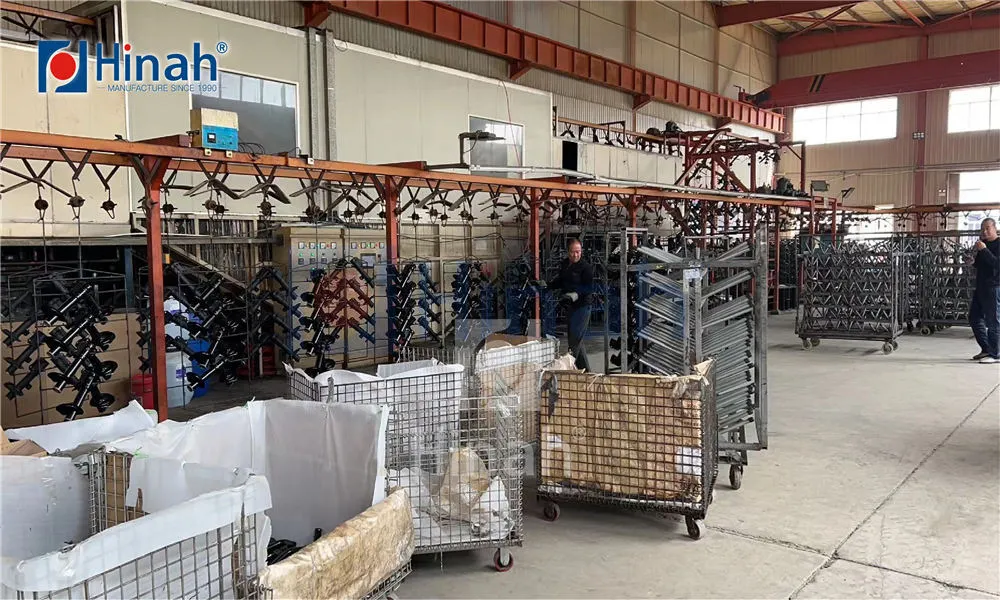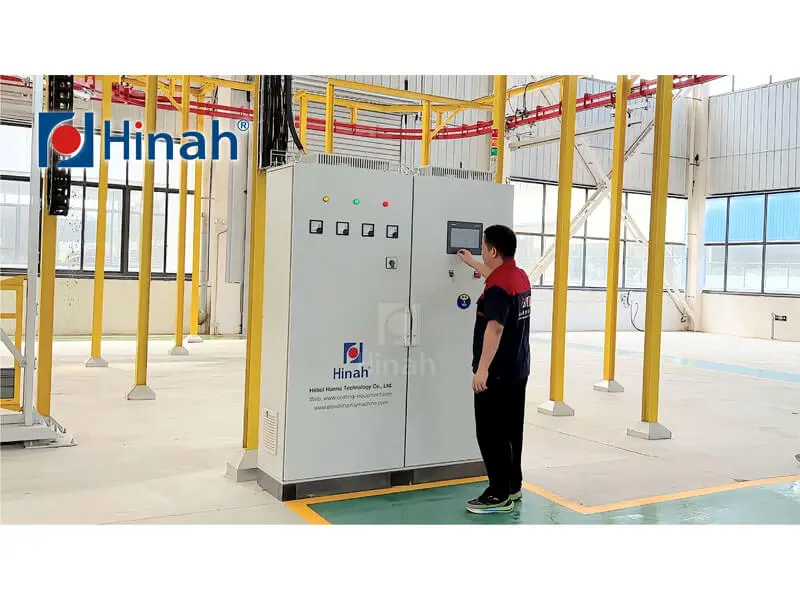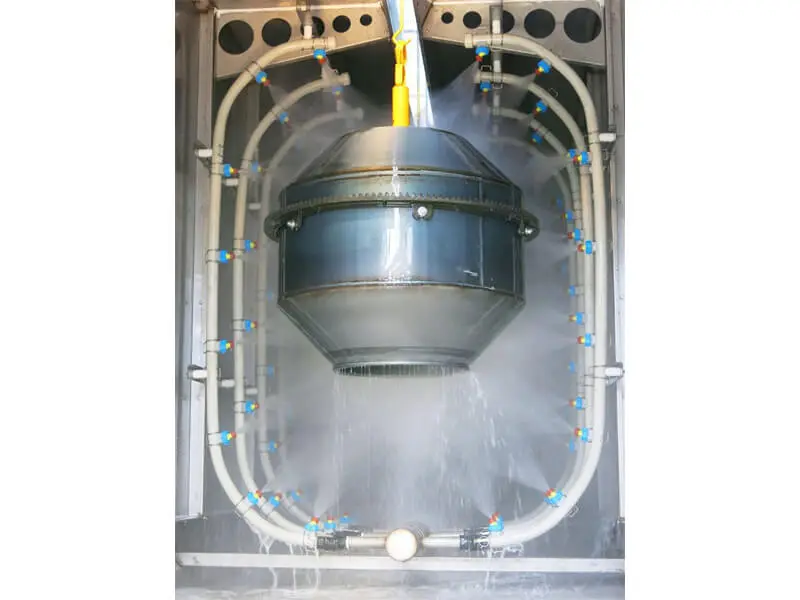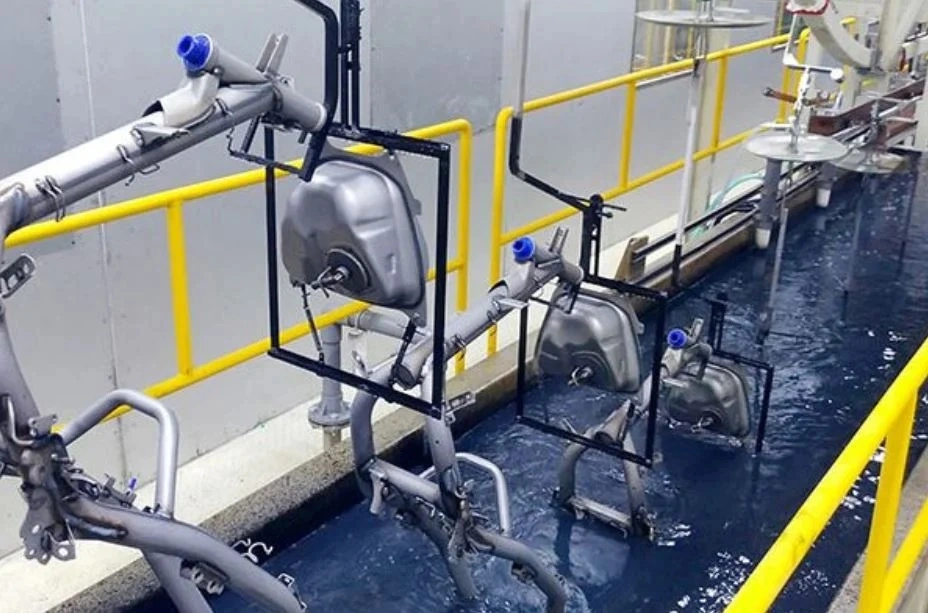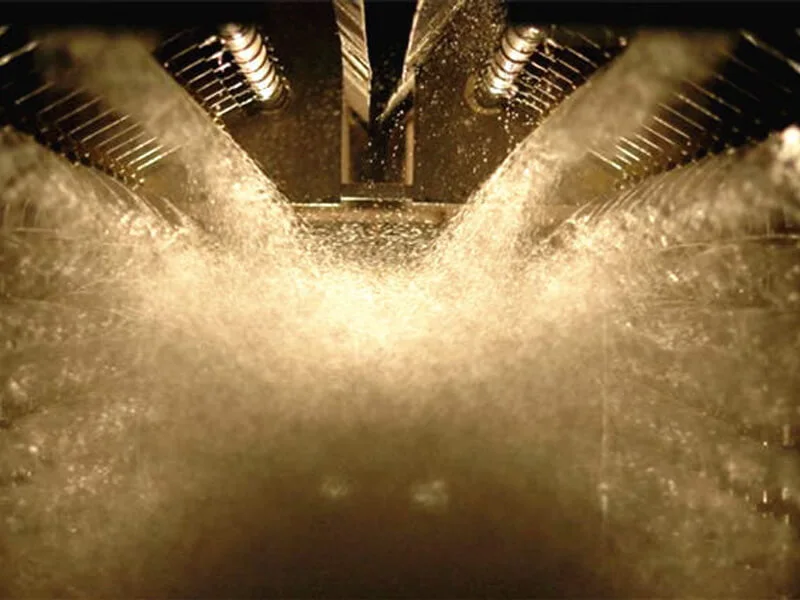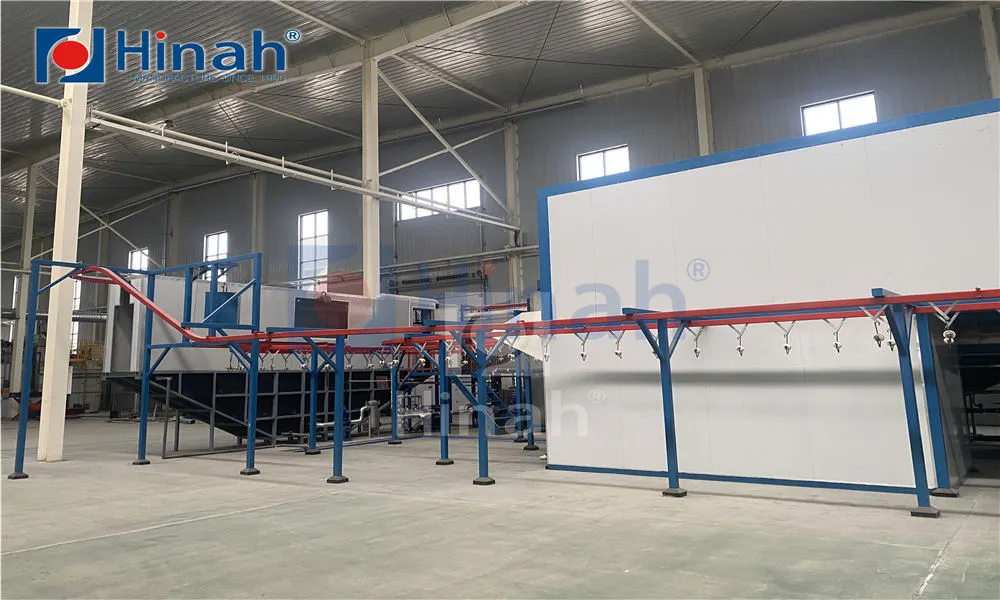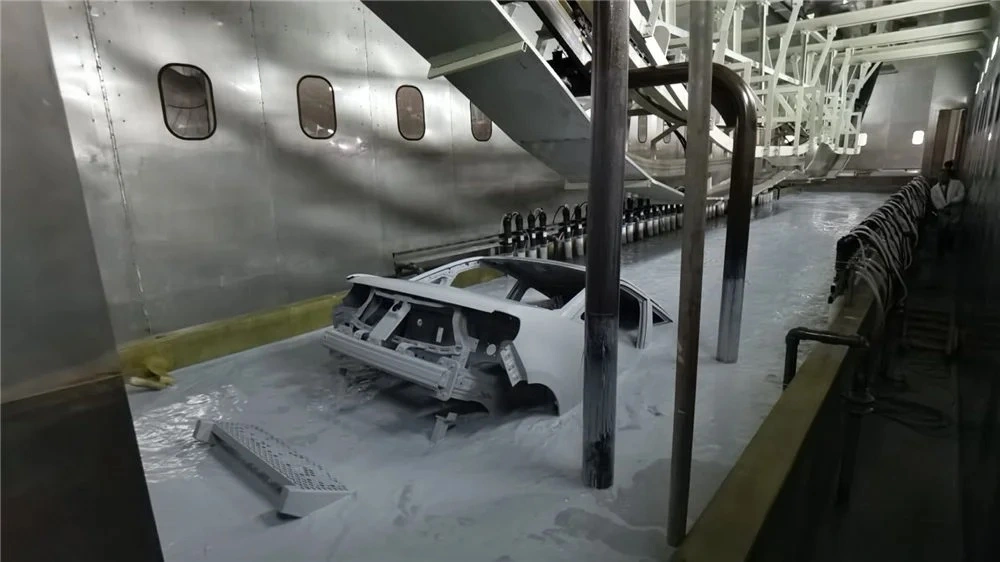Powder coating has become a preferred finishing method in various industries due to its durability, environmental benefits, and cost-effectiveness. However, establishing a successful powder coating plant setup requires careful planning, from initial design to operational execution. This process involves multiple facets, including equipment selection, facility layout, safety protocols, and compliance with international standards. A well-executed powder coating plant setup can lead to enhanced product quality, reduced waste, and long-term profitability. Whether you're venturing into automotive, aerospace, or general manufacturing, understanding the intricacies of a powder coating plant setup is crucial. This article delves into the essential aspects of powder coating plant setup, providing a comprehensive guide to help you navigate the journey. By focusing on practical steps and best practices, we aim to equip you with the knowledge needed to avoid common pitfalls and achieve a seamless implementation. Let's explore the key elements that contribute to an efficient and sustainable powder coating plant setup.
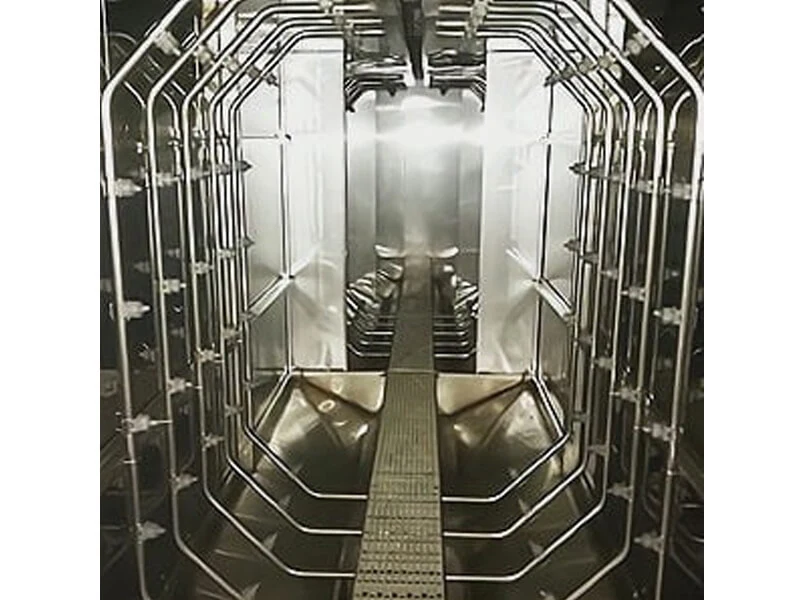
Understanding the Basics of Powder Coating and Its Importance in Modern Industry
Powder coating is a dry finishing process where electrostatically charged powder is applied to a surface and then cured under heat to form a hard, protective layer. Unlike traditional liquid coatings, powder coating produces minimal volatile organic compounds (VOCs), making it an environmentally friendly option. The growing demand for durable finishes in sectors like automotive, furniture, and electronics has made powder coating plant setup a critical investment for many businesses. A proper powder coating plant setup ensures consistent quality, reduces rework, and maximizes throughput. Before diving into the setup, it's vital to grasp the core principles of powder coating, including the types of powders (e.g., epoxy, polyester) and application methods. This foundation will inform decisions throughout the powder coating plant setup process, aligning with industry trends such as automation and sustainability. By prioritizing a robust powder coating plant setup, companies can gain a competitive edge while adhering to global environmental regulations. In any powder coating plant setup, the initial assessment of needs is key to success.
Initial Planning and Design for Your Powder Coating Plant Setup
The planning phase is the cornerstone of any successful powder coating plant setup. This stage involves defining the scope, objectives, and constraints of your project. Start by conducting a feasibility study to assess market demand, production volume, and budget. Key considerations include the types of products to be coated, expected output, and future scalability. For instance, a high-volume powder coating plant setup might require automated conveyor systems, while a smaller operation could opt for manual booths. Engage with engineers and consultants to create detailed layouts, factoring in workflow efficiency. The design should account for material flow, from pre-treatment to curing, minimizing bottlenecks. Additionally, consider energy sources—electric or gas—for the curing ovens, as this impacts operational costs. A well-thought-out powder coating plant setup at this stage prevents costly modifications later. Emphasize flexibility in design to accommodate technological advancements, ensuring your powder coating plant setup remains relevant for years to come. When planning a powder coating plant setup, always keep the end goal in mind: a efficient and scalable operation.
Selecting the Right Equipment for an Efficient Powder Coating Plant Setup
Equipment selection is a pivotal aspect of powder coating plant setup, directly influencing quality, efficiency, and safety. The core components include pre-treatment systems, application equipment, and curing ovens. Pre-treatment involves cleaning and preparing surfaces through stages like degreasing, rinsing, and phosphating. Choose between spray or immersion systems based on product size and volume. For powder application, electrostatic spray guns are standard; options range from manual to automated guns integrated with robotic arms. The choice depends on precision requirements and labor costs. Curing ovens must be sized appropriately for your products, with consistent temperature control to avoid defects. When planning a powder coating plant setup, also consider ancillary equipment like powder recovery systems, which recycle overspray to reduce waste. Invest in high-quality equipment from reputable suppliers, but avoid brand-specific recommendations to maintain neutrality. A balanced powder coating plant setup prioritizes reliability over cost-cutting, as equipment failures can lead to downtime. Regular maintenance schedules should be integrated into the powder coating plant setup to ensure longevity. In summary, the right equipment is fundamental to any powder coating plant setup.
Facility Requirements and Spatial Layout in Powder Coating Plant Setup
The physical space for a powder coating plant setup must meet specific requirements to support safe and efficient operations. Ideally, the facility should have adequate ventilation, climate control, and utilities like compressed air and electricity. Floor space is critical; allocate areas for pre-treatment, coating, curing, and quality control. The layout should promote a linear workflow to prevent cross-contamination and reduce handling time. For example, in a powder coating plant setup, the pre-treatment area should be adjacent to the application booth, followed by the curing oven. Ceiling height must accommodate overhead conveyors if used. Lighting is another key factor—ensure bright, even illumination in coating areas to detect defects early. Safety zones, such as designated areas for powder storage and waste disposal, are essential. When designing a powder coating plant setup, comply with local building codes and industry standards. A well-organized powder coating plant setup not only enhances productivity but also minimizes risks like fire hazards. Consider future expansions; leave room for additional lines or equipment upgrades in your initial powder coating plant setup. The facility design is a critical component of the overall powder coating plant setup.
Safety and Environmental Considerations for a Sustainable Powder Coating Plant Setup
Safety and environmental compliance are non-negotiable in any powder coating plant setup. Powder coatings, while eco-friendly compared to liquids, still pose risks such as dust explosions and exposure to chemicals. Implement safety measures like explosion-proof electrical fittings, proper grounding, and personal protective equipment (PPE) for workers. Ventilation systems must capture overspray and fumes, maintaining air quality. Environmental regulations vary by region, but a global powder coating plant setup should aim for zero discharge by using closed-loop water systems in pre-treatment. Waste management is crucial; powder waste can often be recycled, but disposal must follow guidelines. Training programs for staff on handling emergencies, such as fires or spills, are integral to the powder coating plant setup. Regularly audit your powder coating plant setup for compliance with standards like ISO 14001. By embedding safety and sustainability into the core of your powder coating plant setup, you not only protect employees and the environment but also enhance corporate reputation. A safe powder coating plant setup is a sustainable one.
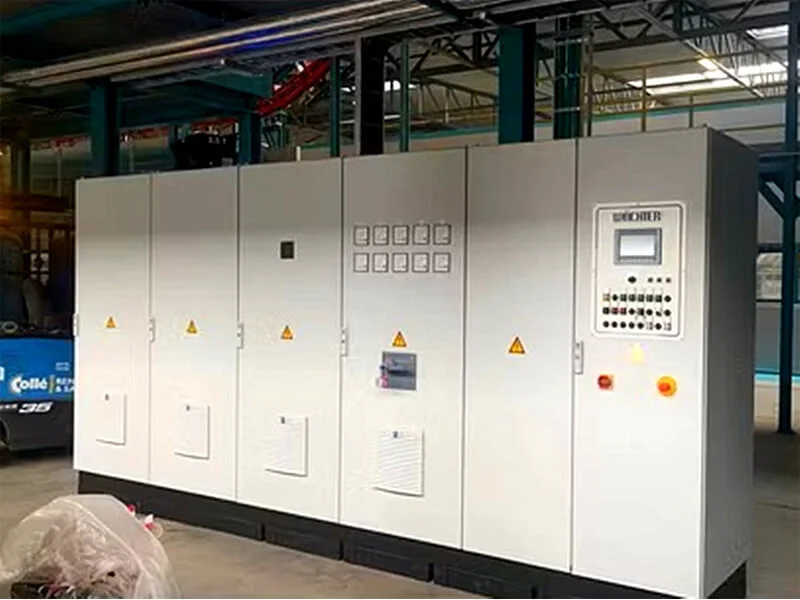
Operational Guidelines and Maintenance for Long-Term Success in Powder Coating Plant Setup
Once the powder coating plant setup is complete, establishing operational protocols ensures consistent performance. Develop standard operating procedures (SOPs) for each stage, from surface preparation to curing. Training operators on equipment use and troubleshooting is vital; a well-trained team minimizes errors and maximizes uptime. Implement a preventive maintenance schedule for all machinery, including cleaning spray guns, inspecting ovens, and checking recovery systems. Monitoring key performance indicators (KPIs), such as first-pass yield and energy consumption, helps optimize the powder coating plant setup over time. Use data analytics to predict maintenance needs and reduce downtime. Quality control should be ongoing, with regular inspections for adhesion, thickness, and color consistency. A proactive approach to maintenance in your powder coating plant setup extends equipment life and maintains product quality. Additionally, stay updated on industry advancements, as innovations in powder coatings or application techniques can be integrated into your powder coating plant setup for continuous improvement. Effective operations are the heart of a successful powder coating plant setup.
Cost Analysis and Return on Investment in Powder Coating Plant Setup
Understanding the financial aspects is essential for a viable powder coating plant setup. Costs include capital expenditure (equipment, facility modifications) and operational expenses (labor, utilities, maintenance). Conduct a detailed cost-benefit analysis, projecting return on investment (ROI) based on factors like production volume and market rates. A powder coating plant setup can lead to savings through reduced material waste and lower energy consumption compared to wet coatings. However, initial investments can be high; seek financing options or phased implementations if needed. Consider hidden costs, such as training and compliance certifications. To maximize ROI, focus on efficiency gains from the powder coating plant setup, such as faster curing times or automated processes. Regularly review financial performance post-setup to identify areas for cost reduction. A well-planned powder coating plant setup typically pays for itself within a few years, making it a sound investment for businesses aiming for growth and sustainability. In every powder coating plant setup, financial planning is key to long-term success.
In conclusion, a successful powder coating plant setup hinges on meticulous planning, from design to operation. By addressing these key aspects—planning, equipment, facility, safety, operations, and costs—you can build a robust system that meets industry demands. Embrace best practices and continuous improvement to ensure your powder coating plant setup delivers long-term value.


